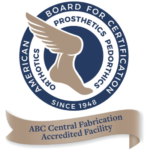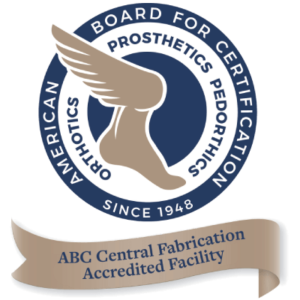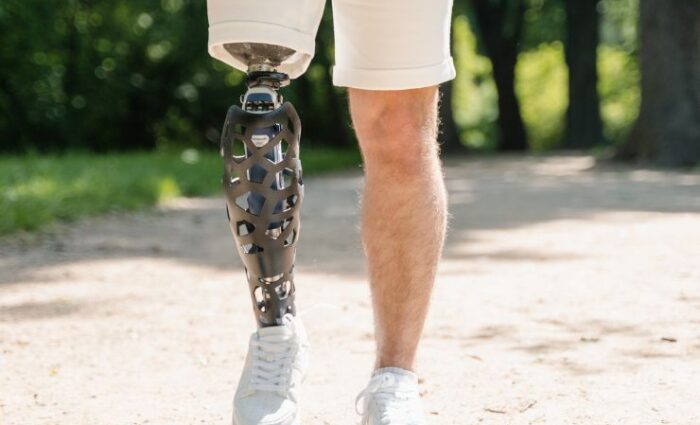Preparing Patients for Their First Prosthetic Fitting: A Provider’s Guide
For patients, the journey to receiving a prosthetic is one marked by hope, anticipation, and sometimes apprehension. The first prosthetic fitting is a significant step that involves adjustment, learning, and adaptation. As a provider, helping patients prepare for this experience can make a tremendous difference in how they transition to using a prosthetic. At Grace Prosthetic Fabrication, we focus on providing patients with the information, support, and resources they need to feel comfortable and confident during their first fitting.
Here’s a comprehensive guide for providers on preparing patients for their first prosthetic fitting, from setting expectations to helping them adjust comfortably.
1. Set Clear Expectations About the Prosthetic Fitting Process
The fitting process is often new territory for patients, and understanding what to expect can help alleviate anxiety and build confidence.
- Explain the Process Step by Step: Let patients know what the fitting will involve, from initial alignment and adjustment to final testing. Provide details on the time it will take, the procedures, and the adjustments they can expect over the following weeks.
- Clarify Goals for the First Fitting: Let patients know that the first fitting may require adjustments and that they won’t have a perfect fit immediately. The goal is to establish a foundation and then make any necessary refinements over time.
Patients who know what to expect are more likely to feel relaxed and comfortable, helping make the fitting process smoother and more efficient.
2. Address Common Concerns and Answer Questions
First-time patients may have concerns about comfort, mobility, and appearance. Taking time to address these concerns can build trust and help patients feel more at ease.
- Common Patient Concerns: Discuss common topics, such as potential discomfort, the appearance of the prosthetic, and how quickly they can expect to adapt. Reassure them that these are normal concerns and that each challenge has a solution.
- Encourage Open Dialogue: Ask if they have specific questions about their prosthetic or the fitting process. Make them feel comfortable expressing any fears or anxieties and offer empathetic responses.
Addressing these questions shows patients that you understand their concerns and are committed to helping them navigate the adjustment process.
3. Discuss the Importance of Proper Fit and Alignment
Proper fit and alignment are essential for comfort, function, and long-term use. Educating patients on these aspects will help them understand the value of a well-fitted prosthetic.
- Explain the Importance of Fit: Let patients know that a prosthetic that’s too loose or too tight can lead to discomfort, irritation, or even injury. Proper fit is key to comfort and mobility.
- Importance of Alignment: Teach patients that alignment affects balance, stability, and how the prosthetic feels when walking or standing. Explain that achieving the right alignment might take a few adjustments.
When patients understand the importance of fit and alignment, they’re more likely to be patient and collaborative during adjustments.
4. Encourage Realistic Expectations for the Adjustment Period
Using a prosthetic is a new experience, and adapting can take time. Preparing patients for this transition period can help them stay motivated and positive.
- Explain the Learning Curve: Let patients know that it’s normal to feel awkward, unsteady, or even slightly uncomfortable at first. Encourage them to view this period as a time of adaptation.
- Adjusting to Physical Sensations: Patients may initially feel new sensations in the residual limb, including pressure or mild discomfort. Explain that this is part of the adjustment and that their comfort will improve as they get used to the prosthetic.
- Setting Milestones: Work with patients to set small, realistic goals, such as wearing the prosthetic for an hour each day or practicing walking with support. These goals help break down the adjustment period into manageable steps.
Helping patients understand that adaptation is a gradual process can reduce frustration and encourage them to stay committed.
5. Prepare Patients for Initial Sensations and Possible Discomfort
For many patients, wearing a prosthetic introduces unfamiliar sensations. Preparing them for this experience can ease concerns and provide reassurance.
- Discuss the “Phantom Limb” Sensation: Some patients may experience phantom limb sensations, where they feel like the missing limb is still there. Assure them that this is common and tends to decrease with time.
- Address Potential Skin Discomfort: Skin irritation or sensitivity is common, especially during the early stages. Encourage them to report any discomfort and let them know that adjustments can be made to improve comfort.
- Discuss Management Techniques: Teach patients about using liners, socks, or other products to manage friction and pressure. Show them how to care for their skin to prevent irritation or sores.
By preparing patients for potential discomfort and giving them tools to manage it, you can help them feel more comfortable and supported.
6. Involve Family Members and Caregivers
Family members and caregivers play an important role in a patient’s prosthetic journey. Involving them in the fitting process can provide additional support and encouragement.
- Educate Family Members: Explain the fitting process to family members and teach them ways to support the patient at home. This might include helping with exercises, assisting with routine tasks, or providing emotional encouragement.
- Encourage Patience and Understanding: Let family members know that the patient may experience ups and downs during the adjustment period. Their support and encouragement can make a significant difference.
A supportive environment helps patients feel more comfortable and motivated, creating a smoother transition to using their prosthetic.
7. Provide Instructions for Post-Fitting Care
Proper care and maintenance of both the prosthetic and the residual limb are essential for long-term success. Providing patients with clear post-fitting instructions helps them manage their device effectively.
- Cleaning and Maintenance: Teach patients how to clean the prosthetic and any liners or socks they use. Proper cleaning is essential for preventing skin irritation and maintaining the prosthetic’s condition.
- Skin Care: Emphasize the importance of skin care, including keeping the residual limb clean and watching for signs of irritation or redness. Explain how to treat minor skin issues and when to seek help for more serious problems.
- Follow-Up Appointments: Schedule follow-up appointments to assess fit, alignment, and comfort. These visits allow for further adjustments and give patients a chance to ask questions as they adapt.
A proactive approach to care helps ensure that patients feel confident and supported in managing their prosthetic.
8. Offer Resources and Support for Further Learning
Some patients benefit from additional resources, including informational materials or support groups, to help them adapt to life with a prosthetic.
- Provide Educational Materials: Offering brochures, videos, or websites with reliable information about prosthetic use can help patients better understand and manage their new device.
- Connect with Support Groups: Many patients find support groups or online communities helpful. These groups allow them to connect with others who have gone through similar experiences and can offer practical advice and encouragement.
- Encourage Physical Therapy: Working with a physical therapist can significantly improve a patient’s mobility and confidence. If possible, coordinate with physical therapists to support the patient’s rehabilitation.
Support and resources empower patients to take control of their prosthetic journey and feel confident in their daily lives.
Contact Grace Prosthetic Fabrication for Prosthetic Fabrication
Preparing patients for their first prosthetic fitting is an essential part of ensuring their comfort, safety, and satisfaction. At Grace Prosthetic Fabrication, we understand the challenges that come with adjusting to a new prosthetic and are dedicated to providing personalized care and support at every step.
With clear guidance, patient-centered education, and compassionate support, we help each patient navigate their prosthetic journey confidently. If you’re preparing a patient for their first fitting or have questions about prosthetic care, contact Grace Prosthetic Fabrication today. We’re here to support patients and providers alike with quality care and innovative solutions.






